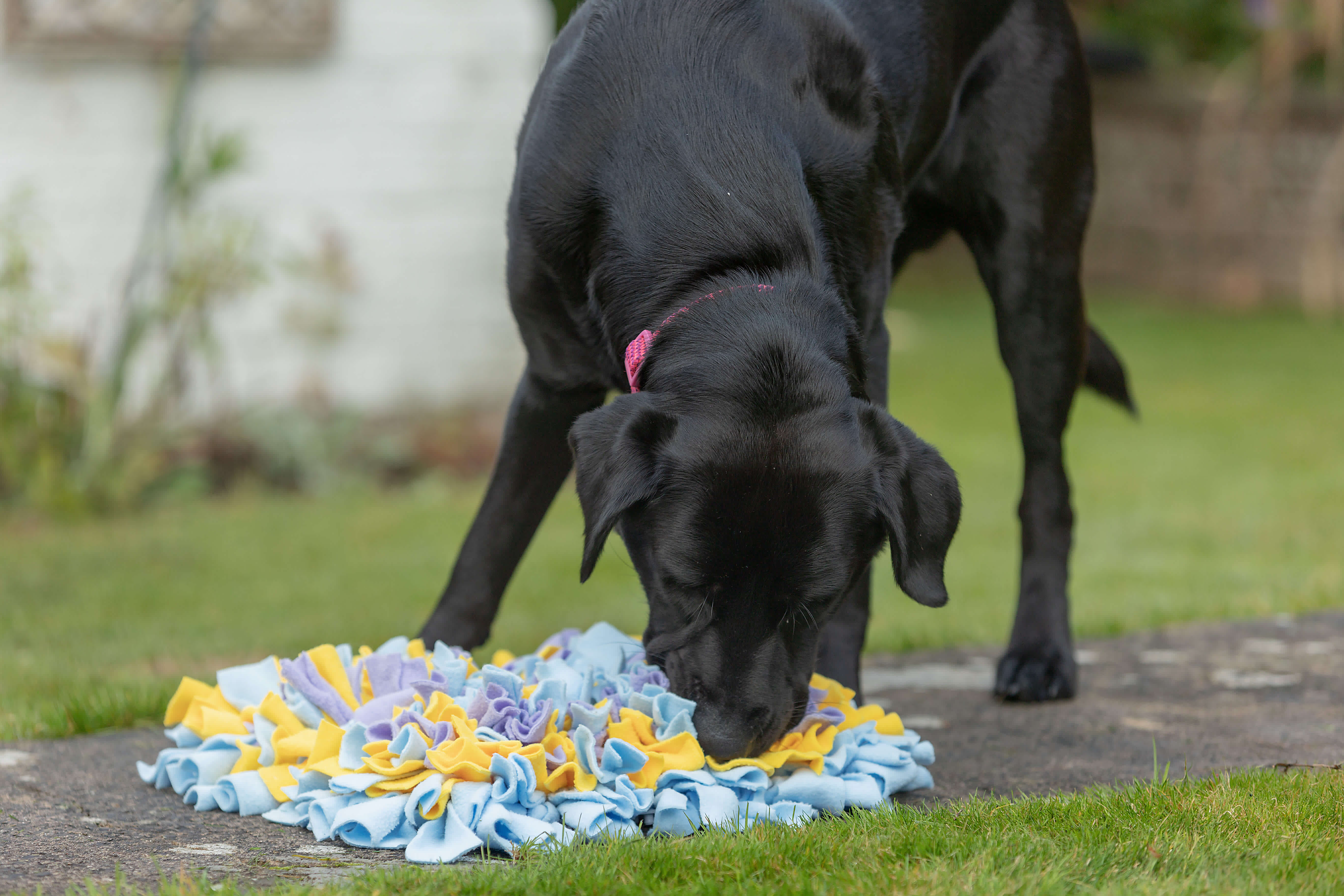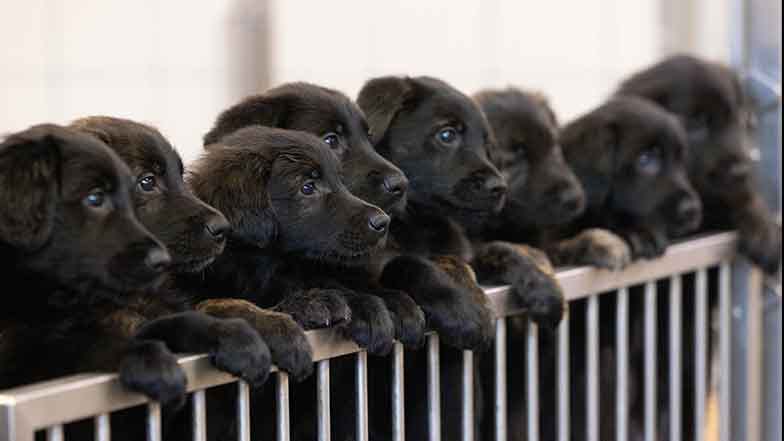A new survey from Guide Dogs has revealed a fifth (21%) of dog owners in Britain are worried their dog will have piled on the pounds over the festive period - equivalent to 2.7 million dogs in the UK.
Over a quarter (27%) said their dog eats more than usual, showing it’s not just people who overindulge at Christmas - with a third (34%) admitting to giving their dogs additional treats as they don’t want them to miss out on the festivities.
In fact, one in six (17%) dogs don’t eat their normal diet throughout the festive period. Instead they'll wolf down turkey or chicken (36%), tuck into sausages (25%) and even munch on unwanted carrots this Christmas (18%). A further 27% of those surveyed admit that their dogs are always ‘on alert’ to scoop up any dropped festive food.
While a quarter (26%) worry their friends or family will give their dog extra treats over the festive season making it hard to track what they’re eating, 19% said that after a few drinks they’d be more likely to share festive party food with their dog.
The new research revealed that a quarter (25%) take their dogs for fewer walks over the Christmas period, suggesting this is due to the cold weather (49%), wanting to stay cuddled up with their pup watching festive films & TV (48%) and staying inside because of shorter daylight hours (45%).
At the end of the feasting festival, almost three in ten (27%) said they would be dialling up their dog’s fitness regime to budge their puppy fat, while a quarter (25%) of dog owners said they will be placing their dog on a diet.
When it comes to identifying their pets’ level of fitness, over four in ten (43%) of respondents regularly monitor their dogs’ weight, while 24% admit they wouldn’t even know if their pup had a poor fitness level. Shockingly, over a quarter (26%) said they don’t even know how frequently their dog needs a walk.

Christmas is often a time of over-indulgence – and whilst it’s inevitable dogs might enjoy an extra treat or two over the festive season, it’s important they are kept active and maintain a healthy diet, to avoid putting on weight. Almost a third of those surveyed would like to know how to keep their dog’s fitness and health the best it can be. Our tips will help dog owners across the country feel inspired to get out and about with their dog and even include some fun fitness ideas to do from the comfort of your own home.
Tim Davies, Chief Veterinary Officer at Guide Dogs

To help four legged friends across the country get in shape for the new year, Tim has shared advice on fun activities dog owners can do with their pups to get their tails wagging and lose the puppy fat.
Up your dog’s exercise with more frequent or longer walks, but remember build these up slowly, especially if your dog is older or has health conditions.
Make running around more stimulating with games such as frisbee and fetch.
Play hide and seek and have your dog run between hidden two family members. This works best in the woods where there’s plenty of trees and bushes to crouch behind, or even around the house.
Make play dates with your dog’s canine friends and let them really blow off steam off-lead in the park.
Swimming is low impact on the joints and so much fun if your dog is a real water baby. On icy days, head to your local canine hydrotherapy pool.
Swap arms day at the gym and play tug-of-war instead. Pick up a rope toy and get your dog pulling and pulling.
Use your dog’s dinner to create sniff and search games around the house to make mealtimes more fun and last longer.
Tim has also shared the signs a dog is overweight that dog owners should look for, and what they should do next:
If your dog’s ribs are well hidden below a layer of fat and they are missing a nipped waist and tummy tuck, they could be carrying too much weight.
Dog’s classed as overweight or obese are more prone to an array of aliments, including heart disease and cancer.
Weighing too much also puts increased strain on your dog’s joints, which can cause serious issues with the back, hips, and elbows.
Your vet will be able to weigh your dog and give them a body condition score out of 9. Five is the ideal size for your dog to be, with between 6 and 9 representing increasing degrees of obesity.
Your vet can also offer advice about food and exercise personalised to your dog’s age and health, to help get them back on the right track. Remember to always consult your vet before changing your dog’s diet or exercise routine.


